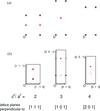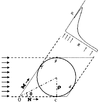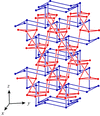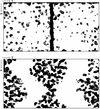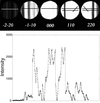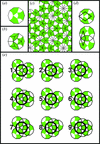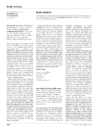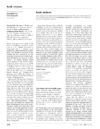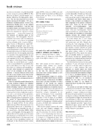issue contents
July 2003 issue

Cover illustration: Polyhedral representation of voids in the sodium-free sublattice of the crystal structure of NaAlSiO4 zeolite. See Blatov & Shevchenko [Acta Cryst. (2003). A59, 34-44].
research papers
Methods to determine the axial ratios of primitive and body-centred tetragonal lattices admitting multiplicities Σ lower than a chosen upper limit are developed and applied to produce lists giving all cases with Σ ≤ 5 and the corresponding twin mirror planes.
The power ratio distribution, the integrated power ratio and the secondary-extinction factor for cylindrical crystals with three kinds of mosaic distributions are calculated and are analyzed to reveal their relationship with the diffraction geometry.
A `six-beam X-ray section topograph' experiment was performed whose images are in excellent agreement with the images computer-simulated using a theory based on the Takagi–Taupin dynamical theory.
All homogeneous sphere packings have been derived that refer to the invariant and univariant lattice complexes of the hexagonal crystal family. Numerous examples of corresponding crystal structures are given.
Two phasing protocols are compared for Xe-apocrustacyanin A1 as a test case. The L1-absorption edge optimized Xe f′′ signal using 2.0 Å wavelength yielded high-quality electron-density maps even with modest redundancy (7) from a single data set.
Improving triplet-phase accuracy by symmetry observations in reference-beam diffraction measurements
Symmetry in reference-beam diffraction experiments leads to a fourfold measurement redundancy of any triplet-phase δ in a complete 360° rotation, with two of the four cases corresponding to measurements of the coupling Friedel's mate that may give rise to enhanced three-beam interference effects.
Accurate charge deformation maps in rutile are obtained by using accurate low-order X-ray structure factors measured by quantitative convergent-beam electron difraction.
Methods of determining the combinatorial symmetry of a net and of determining whether two nets are combinatorially isomorphic are described.
Quasi-unit-cell models and Penrose-tile models are equivalent.
short communications
The symmetry point-group statistics for all combinatorially non-isomorphic simple 14- (339722) and 15-hedra (2406841 in total) are contributed in the paper for the first time.
A scattering-angle-dependent formula has been developed and used to estimate the anomalous signals in single-wavelength anomalous diffraction (SAD) experiments.
international union of crystallography
Free 

book reviews
Free 

Free 

Free 



 journal menu
journal menu









